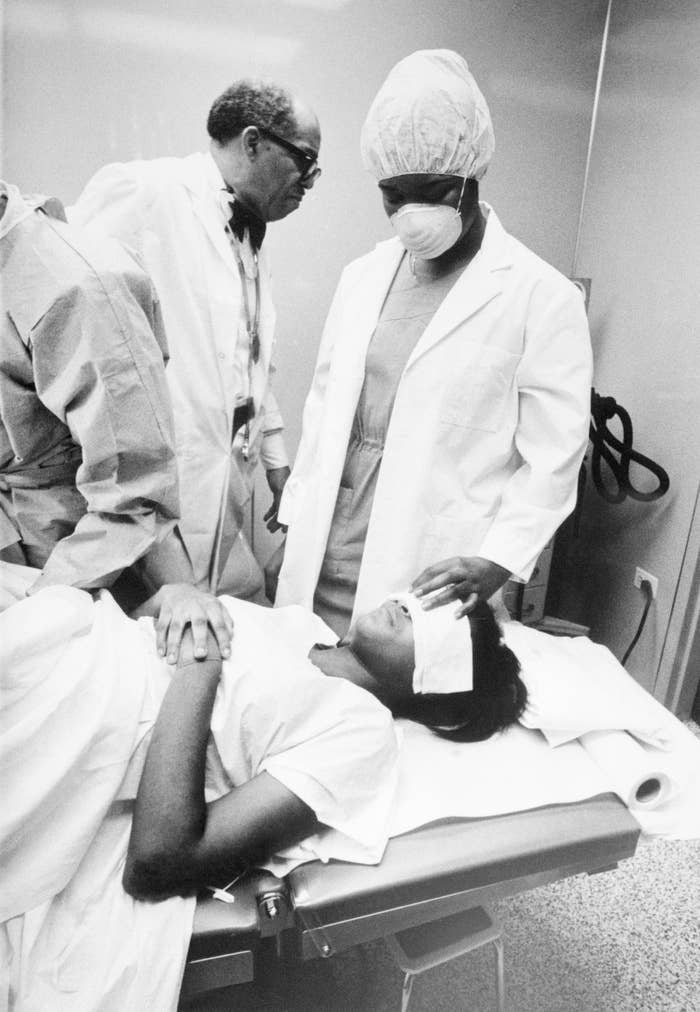
In 1972 I was a third-year medical student doing my first clinical experience in obstetrics and gynecology at Cook County Hospital, a large facility in inner-city Chicago.
Abortion was still illegal, and women who were pregnant and desperate would seek ways to end their pregnancies. Those with resources could find ways to safely terminate a pregnancy, but others — including those in the mostly poor, minority communities served by our hospital — did not have that option. They turned to methods including self-medicating with a number of toxic chemicals, attempting to introduce something into the uterus, and seeking someone willing to perform an illegal procedure.
These methods often had disastrous consequences for the women involved — consequences that we saw firsthand when they were brought into the hospital.
A section near the emergency room was set aside for triage of these patients. I saw chemical burns, as well as perforations of the bladder, vagina, uterus, and rectum. Some women came in with overwhelming infections or in septic shock. The role of triage was to determine who needed immediate surgery and who could go to the ward.
At that time, Cook County had a 40-bed Septic Abortion Ward. It was a large room with the beds separated by curtains. The role of the medical student — my role for the week I was there — was to push a large cart of antibiotic solutions around the room, hang the antibiotics and connect them to the IV line, and take the patients' vital signs. When one of the patients died, I was to call the diener — the morgue attendant who collected the bodies. A death in this ward was a common occurrence.
One year later, Roe v. Wade was decided and abortion was made legal. It took a while for everyone in the community to learn that they could now safely and legally terminate their pregnancies. But within a year or so, the Septic Abortion Ward at Cook County Hospital closed — it was no longer needed.
The experience I had working in this ward left a lifelong impression. It taught me the value and necessity of providing abortion services in a safe, sterile, supportive environment. Even though as a medical student I was not politically active, I vowed to help provide access to this service.
Over my years practicing obstetrics and gynecology, I encountered a number of situations where a pregnancy termination was the best option. Many of these were tragic and devastating experiences for a family hoping to have a normal pregnancy. There are a number of fatal genetic and developmental conditions that result in a pregnancy that could be carried to term and delivery, only for the family to watch the infant die a slow, agonizing death. I always thought that providing termination in those circumstances was a humane act, shortening the suffering of both the fetus and the family. Otherwise you are needlessly prolonging the act of dying.
These decisions are heart-wrenching, and not taken lightly. They should be made by the family in consultation with supportive medical professionals. I cannot imagine how legislation to regulate pregnancy-related services could take into account the social, psychological, and emotional turmoil faced by individuals in these situations.
Safe and legal pregnancy termination should be part of comprehensive health care services available to all. I saw firsthand what the restriction of these services results in: a death sentence for poor and desperate women, or a needlessly prolonged death for fetuses with a severe genetic anomaly.
We should never return to those dark days.
Allan Weiland is a retired OB-GYN physician who practiced in Portland, Oregon. He is a graduate of Northwestern University Medical School in Chicago.
